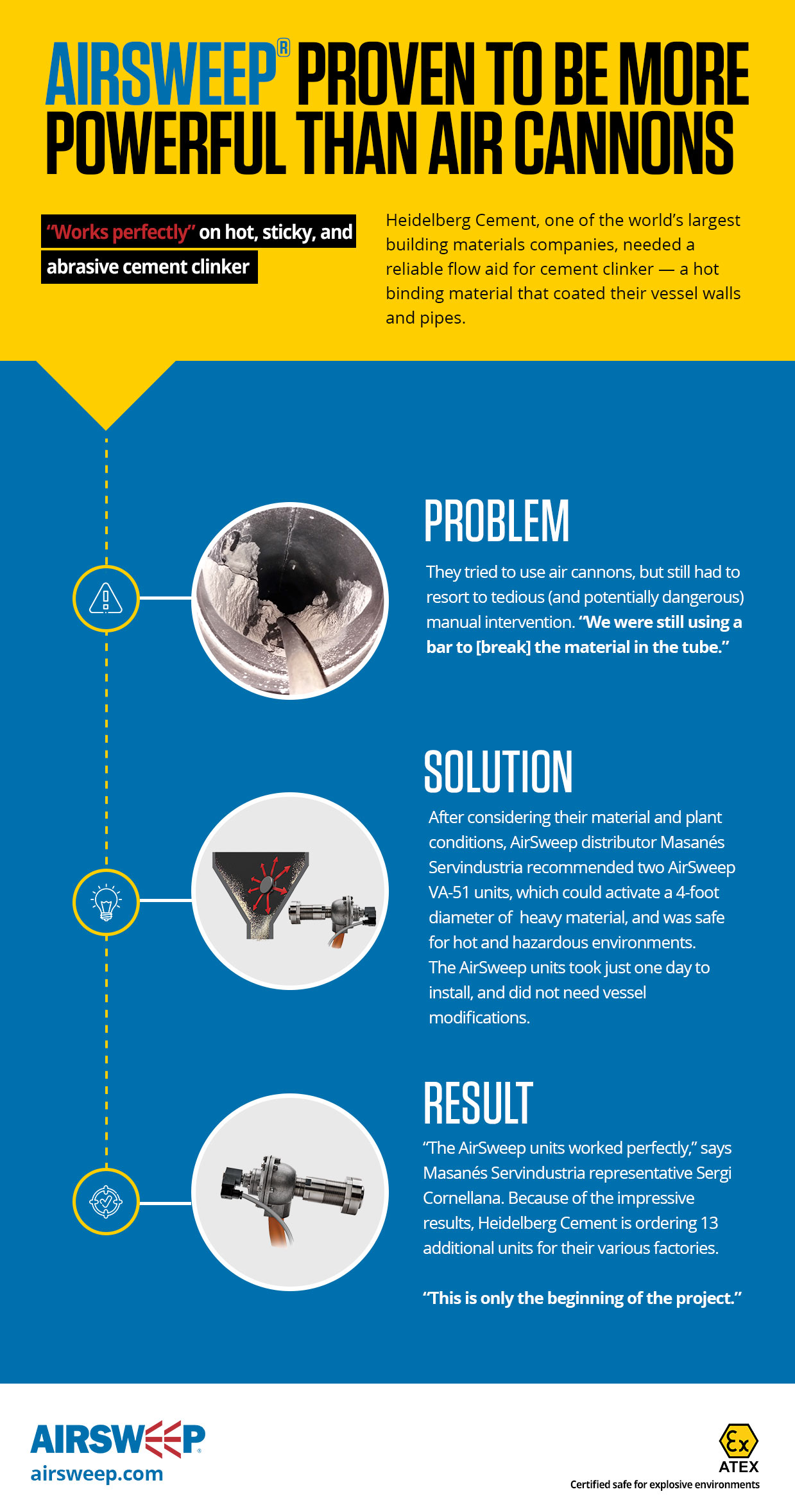AirSweep Proven to Be More Powerful Than Air Cannons for Cement Materials
Many of the raw materials used in cement are prone to caking and material blocks. They stick on chutes, clump up in storage silos, and cling to tubes and vessel walls.
Heidelberg Cement, one of the largest building materials companies in the world, faced this exact problem in its production line.

Problem
During cement production, crushed rock is combined with iron ore and fly ash, then melted at 2,700F in a kiln. One of the by-products of this process is clinker: gray marble-sized balls that are passed through coolers, then ground and mixed with other materials to be used as cement binder.
Clinker is a hot, sticky, and abrasive material that tends to cling to vessels and chutes. Heidelberg Cement tried to blast through the blocks with two AIRCHOC air cannons.
It didn’t work.
Human intervention was still needed to fix the issue. “We were using a bar to [break] the material in the tube.”
Solution
Heidelberg Cement needed a more reliable material flow aid that could eliminate all material blocks. They contacted Masanés Servindustria — a provider of conveyors, belts, and other accessories for bulk solids processing and transport. The Company is the official distributor of AirSweep® in Spain.
Sergi Cornellana, a Masanés product manager, assessed their process and recommended replacing the air cannons with two AirSweep VA-51 units. This is AirSweep’s largest and most powerful model. Each unit can activate the toughest and stickiest materials within a four feet radius and can even operate in hot or hazardous environments.
Results
“The AirSweeps worked perfectly,” says Cornellana. In fact, Heidelberg Cement was so happy with the results that in the last year, they ordered 13 additional units for their various factories. “This is only the beginning of the project.”
AirSweep was an effective, fast, and simple solution. They were able to install it themselves in less than a day — and from that point on, nobody had to worry about clogged clinker again.




